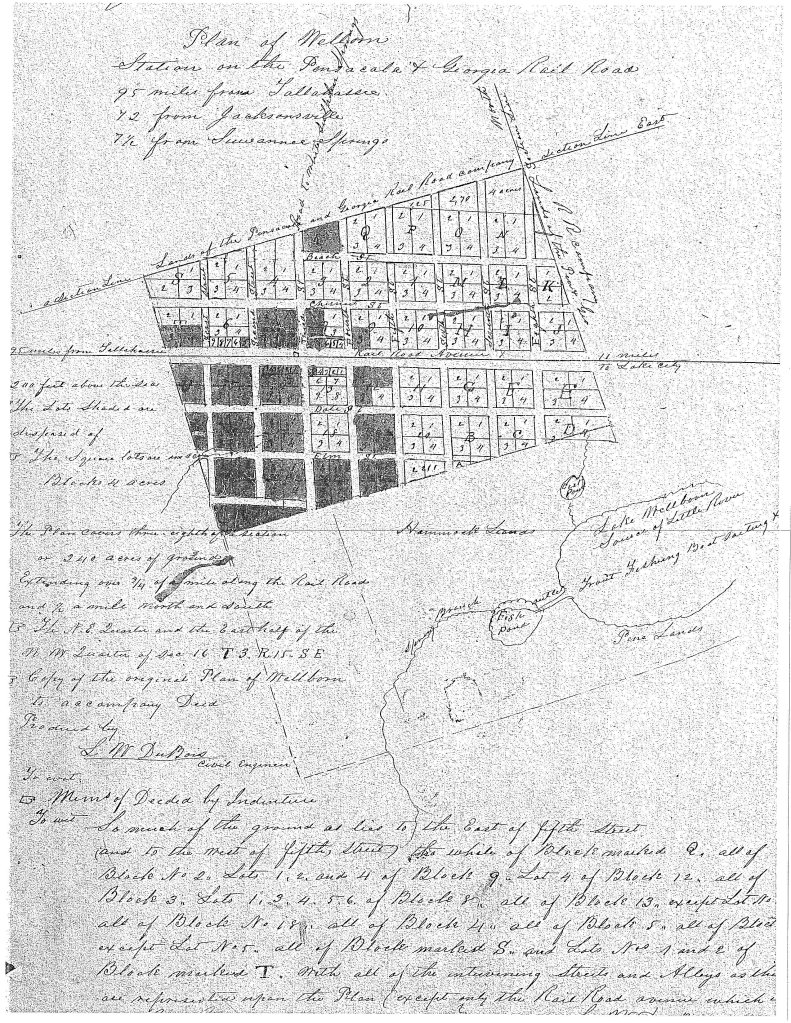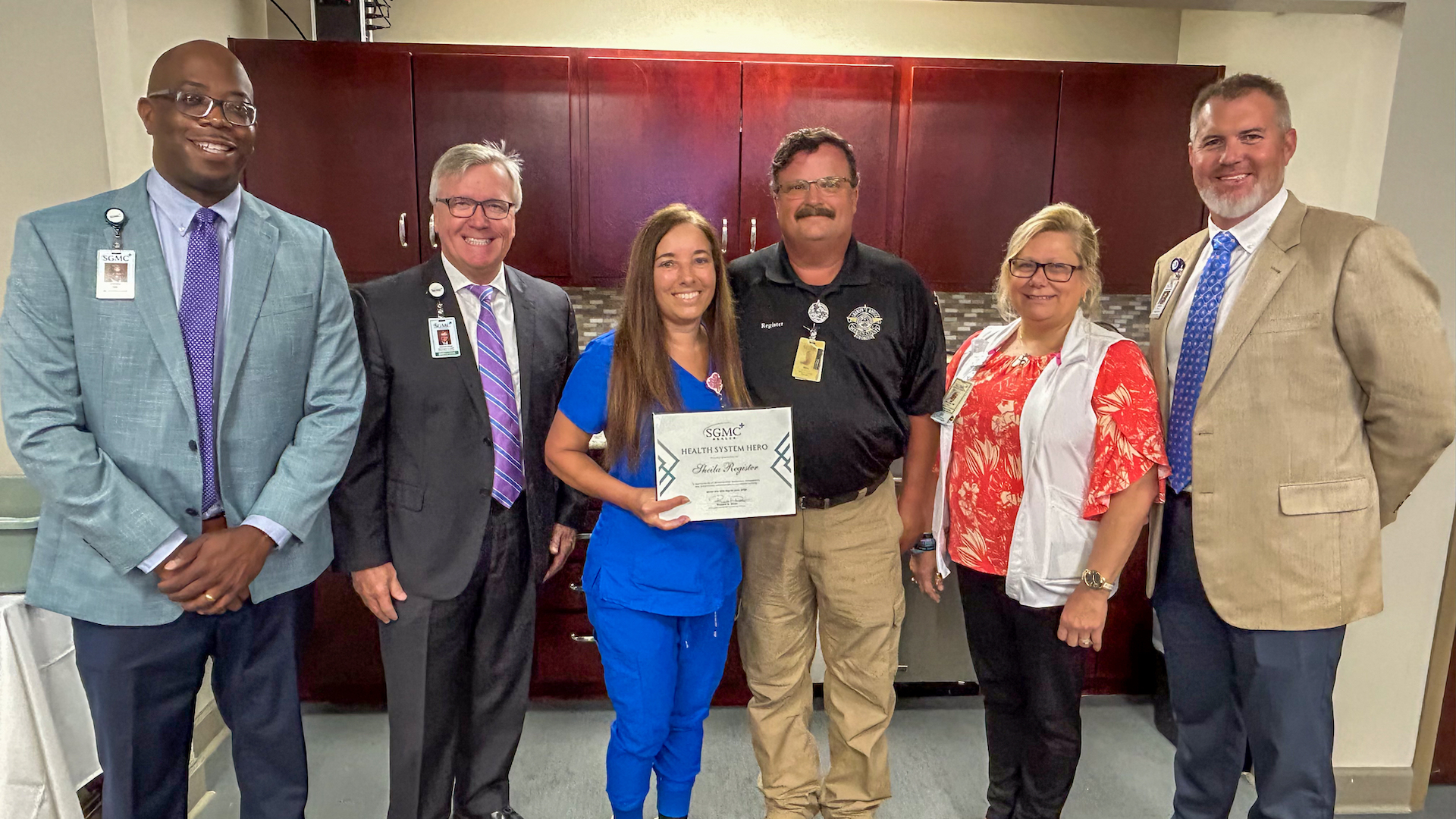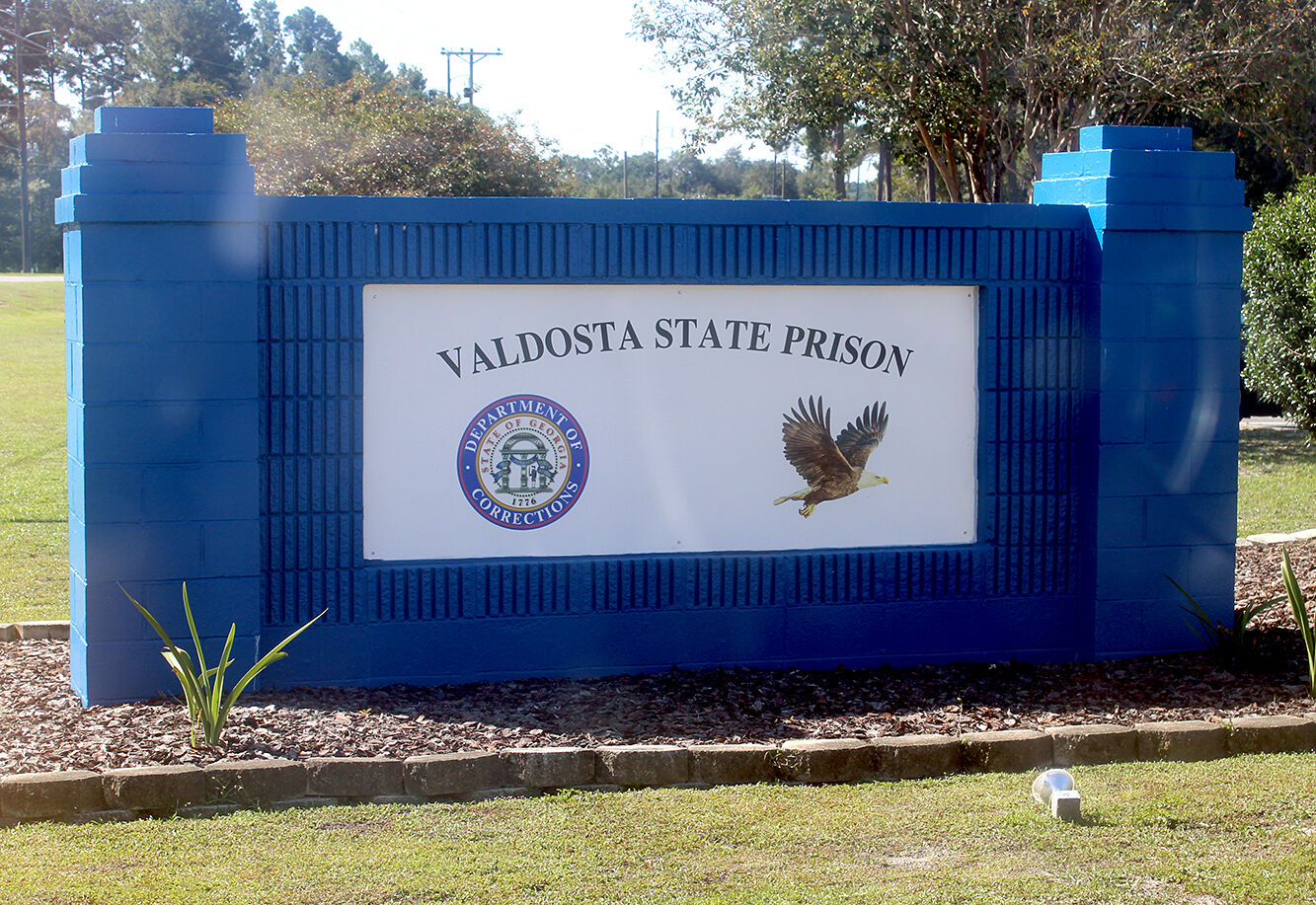A look at Suwannee’s past – Wellborn
Published 4:09 pm Wednesday, January 1, 2014

- A plat map of Wellborn circa 1860.
Information supplied by Eric Musgrove, county historian
The community of Wellborn is one of the oldest existing communities in Suwannee County; the area in and around it was settled by Americans before practically any other location in the County. Wellborn’s age, coupled with its history, makes for an interesting (to me, anyway!) article or two. Thus, in what should be my first article of 2014, we will begin a brief look at the history of Wellborn.
Historians would say that the present community of Wellborn began around 1830, when George E. McClellan claimed 560 acres at Wellborn’s present site along the Old Spanish Trail. At the time, Native American attacks were still common in this frontier area of Florida. While the first homes were under construction, a lookout was posted to warn of Seminole Indian raids. McClellan’s plantation home soon became a stop for stagecoaches traveling between St. Augustine and Pensacola; it was where horses were changed out and the injured (from the Seminole Indian attacks) were treated. McClellan called his community “Little River” after a short river that ran from McClellan Lake into what is now Wellborn Lake. Little River shows up on several maps until the 1870s, when the name “Wellborn” first appeared with it, then replaced it. Interestingly enough, by the 1880s there would be another community named Little River located due south of Wellborn and due east of McAlpin, only about five miles away from the original.
The Second Seminole War broke out at the end of 1835, and several battles and massacres occurred in north and central Florida. By September of 1837, problems with Seminole Indians in northern Florida required detachments of soldiers to be stationed at Charles’ Ferry (at what is now Charles Springs), a nearby plantation, and on the Madison County side of the River at San Pedro. This threat had disappeared almost completely by the summer of 1838 as most Native Americans were removed elsewhere. Most of the soldiers and militia units were either disbanded or moved to areas of greater military activity and the settlers who had fled to fortified outposts returned to their homes. However, the danger was not over for the residents of north Florida. The last recorded Indian raid in what is now Suwannee County was near present-day Wellborn in February of 1842, when the wife and several children of Richard “Dick” Tillis (called “Tullis” in some accounts) were massacred while he was helping a neighbor. A full account of the attack, as well as George McClellan’s letter to the governor petitioning for military assistance, can be found in the minutes of the Fourth Session of the Legislative Council of the Territory of Florida (1842).
Several “forts” were listed as being in what is now Suwannee County during the Second Seminole War, although most were probably no more than a few logs set up as breastworks and barricades. Columbia County pioneer George Gillett Keen, in his published reminiscences, mentions a Fort Jinks at modern-day Wellborn. After the end of the Second Seminole War in 1842, this presumed fort, as well as the others in the area, were abandoned and soon stripped of all useful equipment by nearby settlers whose numbers increased with the threat of Indian attacks now gone. Today, little remains of these forts and outposts except a few scattered relics and place names (Fort White, Fort Lauderdale, etc.).
Due to the increasing number of settlers in the area that would soon become Suwannee County, the Florida Legislature petitioned the Federal Government in mid-December of 1856 to establish a mail route “from the House of Geo. E. McLellan’s (sic) on Little River in Columbia County to Shoal Town on Suwannee River, via Samuel Barber’s and Wm. Johnson’s, a distance of thirty miles.” Since a map from 1856 already showed “Little River P.O.,” either Little River already had a post office (the most likely explanation), or the mapmakers were Johnny-on-the-spot with the map. Little River continued to have a post office through the Civil War, when several maps showed it as “Little River P.O.” However, Little River’s days as a community were ending.
In 1857, construction began on an east-west railroad across North Florida, with the portion running through what is now Suwannee County being known as the Pensacola and Georgia Railroad Line. The railroad was completed in 1861, linking Jacksonville with Tallahassee and beyond. One of the civil engineers who worked on building the railroad was Louis (also spelled “Lewis”) Wellborn DuBois (also spelled “Dubose” or Dubois”), of Tallahassee. According to an old story that I have passed on in print myself, in appreciation for his help, DuBois was given 162 acres near the town that would bear his name. However, Suwannee County deed records actually show that DuBois purchased 240 acres on January 16, 1860 from the public lands of the State of Florida; the cost was $1.25 per acre. DuBois quickly surveyed and platted the town of Wellborn in 1860 (spelled “Welburn” or “Wellbourn” on some period maps), as also recorded in Suwannee County’s deed records.
It appears from a cursory review of Suwannee County records that Mr. DuBois did not retain ownership of the 240 acres that originally comprised Wellborn for long, as he sold his acreage to more than a dozen different families within a year. One of those families who purchased property was the McLeran family, one of the most prominent families in Wellborn’s history. According to some sources, the first post office at Wellborn was established in 1860 with Jesse N. McLeran as the first postmaster; however, other sources list October 17, 1865 as the establishment date. In 1884, A. W. McLeran opened a general mercantile store before serving as a state senator from 1893-1897; the store remained a family business until sold in 1967. The McLeran House, built around 1900, still stands as a popular Bed and Breakfast.
In next week’s article, we will continue a brief history of Wellborn.





